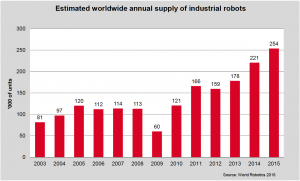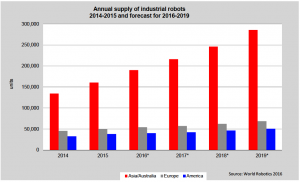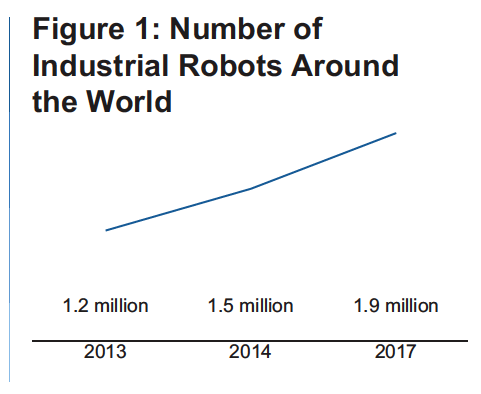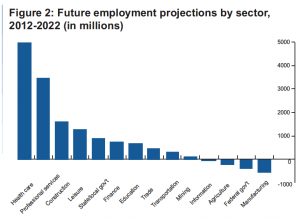Innovation and technology are having a fast-paced impact on the entire world. Companies and citizens are constantly transforming their rough ideas into new disruptive technological products or services. This might seem like a good development, but it can equally affect society for the worse.
In general, local governments are trying to keep up with the quick, sometimes surprising, technological developments that are being introduced. Nevertheless, it is sometimes the case that common law and, more specifically tax law, is somewhat lagging behind. This creates loopholes through which many stakeholders can legally circumvent the law, which is sometimes questioned on an ethical basis. It is in this context that the so-called robot tax has come to be debated.
Robotics and other technological solutions are maturing and are increasingly accepted by the market. The major question is whether tax law should move with robotics because it is more matured now. The aim of this article is to introduce the viewpoints given on this issue, and to offer a final conclusion and a future outlook on it. Should local governments tailor tax law, since robotics is maturing? And how does the dehumanising factor play a role in this, since it is estimated that robotics poses a considerable threat in the labour market?
The Robot Market: Analysis and Outlook
Especially in the developed world, robots are heading to the forefront and thereby play a more central role. According to the International Federation of Robotics (IFR), robot sales increased by 15% from 2014 to reach total sales of 253,748 units worldwide in 2015.
This was the highest yearly increase ever recorded. The main underlying growth was in the general industry (33% growth in 2015), with huge increases in the electronics industry (+41%), the metal industry (+39%), and the chemical, plastics, and rubber industry (+16%).
These incredible growth rates were mainly the result of the soaring trend of automation, and the further exploration of innovative solutions for industrial robotics. The chart below, for example, shows the dramatic developments in supply over recent years:

Moreover, the core supplier in robotics industry is China, which had a 27% share in the market in 2015. Generally speaking, the Asian market has been dominating the robotics market for the last couple of years.
The top five countries – China, South Korea, Japan, the US, and Germany made up 75% of global robot sales in 2015. The total number of robot installations is expected to increase by around 13% on average per year between 2017 and 2019. Meanwhile, the forecast for the US and Europe is 8%, and 15% for Asia/Australia. Overall sales in 2019 are expected to hit 413,000 units. The annual supply estimation can be seen below:

On the other hand, it is also a must to look at the total number of robots being used by the market’s most demanding countries, and clarify what the future trend will be. According to the Center for Technology Innovations at Brookings report, there were 1.2 million robots in use in 2013, with 1.5 million in 2014 – and this is expected to grow to 1.9 million in 2017.
“Governments should implement a tax on robots to bring about a more equally-weighted balance between men and machines.”
While China is the largest annual supplier, Japan has the most robots in use: the Land of the Rising Sun counted 306,700 robots in 2015. Japan was followed by North America with a total number of 237,400, by China (182,300), South Korea (175,600), and Germany (175,200). It can be clearly seen that Asia is still the dominating continent. In addition, the overall sector is expected to grow in value from $15bn in 2015 to $67bn by 2025.

But this just covers the supplies, number of robots, and sector estimations. It is also valuable to have a look at the costs involved, which are a vital factor to better understand the tax policy arguments that are to be discussed below. In robotics’ early days, it was known as a high-cost option that was dominantly used in the automotive industry, since carmaking was known for its high-wage labour market which made robots a viable option.
However, this shifted massively throughout the years, and the costs of robots have fallen substantially. This resulted in a better cost competitive position for robotics in other sectors too, thereby increasing the threat posed to human workers. Moreover, in some key industries in Asia, the cost-competition threat is already on a higher level.
The Argument for a Robot Tax
It can be concluded so far that robots are an efficient, precise, and effective solution for the near future. It can also be said that robots will more dominate the labour market. However, in terms of taxes, this needs to be more fairly weighted.
According to Bill Gates and Benoît Hamon (the Socialist candidate in the upcoming French presidential election), governments should implement a tax on robots to bring about a more equally-weighted balance between men and machines.
At first, it might be argued that robots should not be taxed because they provide improvement factors like efficiency, preciseness, effectiveness, and productivity. However, developments regarding robotics are implemented at such a quick pace that this automation process will harm jobs, which results in more unemployment – especially in sectors with a lot of lower-class workers, like agriculture and manufacturing. A future employment forecast broken down by sector can be seen below:

Bill Gates clearly emphasised that this quick automation trend should be slowed down in order to more smoothly implement robotics and create new types of jobs for the workers who have a higher chance to be replaced by robots in the near future.
Bill Gates said that the tax on robots would have a slightly negative impact on innovation, but that it will have a beneficial outcome in the long-term, especially for lower-class workers.
Another result of the tax on robots is that it will better allow national governments to put the right tax policies and other law enforcements in place, since robots have a crucial impact on the human payroll, unemployment, and employee benefits. A quick reduction in these kinds of costs can result in less corporate income allocation to a given tax jurisdiction, thereby creating the incentives for governments to implement taxes on robotics.
Bill Gates definitely has a point, especially if some worker groups are taken into account. Corporation-wise, though, there might be a risk related to this. Wealth-related taxes come as additional burdens on top of regular income tax, and so the result may be that companies start shopping for the most beneficial tax policies and end up moving to rival jurisdictions with lower taxes.
In addition, Hamon’s view suggests the direct robot tax proposed by Bill Gates might not be an ideal solution. He proposed a social charging system, where employers transfer robot-related added value to their workers. This is ideal for a country like France, where employment taxes are considered to be high, but it is questionable whether it could work in other countries around the globe.
Against a Robot Tax
There are also some arguments against the implementation of any kind of robot tax. Leonid Berschidsky, a Bloomberg View columnist, argues that it is just a radical proposal coming from far-left politicians like Benoît Hamon, bad for human employment. On this view, a tax on robotics, which thereby increases costs, is not the ideal solution for the increasing unemployment of lower and middle-class workers.
The IFR even indicated that an increase in industrial robotics would lead to a worsening unemployment rate in the US. The implementation of this new robot tax policy would slow down job growth and the entire economy since automation and robotics have a positive impact on innovation in the labour market.
Nevertheless, there are other factors that have equally-weighted importance if the whole situation is taken into account. According to a study by Cortes, Jaimovich, and Siu, 2016, factors like the general education level, protectionist’s policies, and the weakening of the safety net all have an impact that is just as important as the impact of automation and robotics. In the end, the implementation of robot tax is not the full solution for preventing workers from shifting away from routine jobs (that are mostly considered to be an ideal replacement opportunity for robots).
What Next?
It can be concluded that there are mixed viewpoints regarding the tax on robotics. On the one hand, a tax on robots is considered to be a valuable idea, because it will slow down the automation process, which creates better chances for lower-class workers to retrain themselves or to find other employment opportunities. On the other hand, a robot tax would not be the full solution in order to solve the shifting trend from routine jobs to other types of employment or to a higher robot-human capital ratio. The general public’s level of education, the government’s protectionist policies, and the state’s safety net are all factors that should be taken into account too in order to have an entire overview.
There is even the argument that automation and robotics have a positive impact on the development of the labour market. In the end, the blue and white collar workers that face high risks of being replaced by robots and technological developments in the near future should retrain themselves in other to create extra value that they can offer to their current employer, or move to other types of jobs. Furthermore, the educational system should be revised on a yearly basis in order to prepare people for the employment market of tomorrow.

















